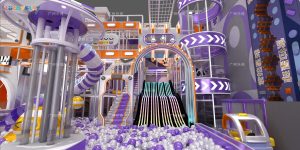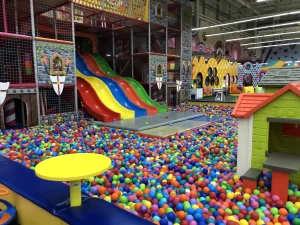Introduction: What Is a Go Kart?
A Go Kart, also spelled go-kart, is a small, open-wheeled vehicle used for racing or recreational driving. Whether it’s a thrilling day at the track or a child’s first driving experience, go karts appeal to people of all ages. They combine the adrenaline of racing with the accessibility of a safe and fun ride, making them popular worldwide.
Go karting can be a gateway to professional motorsports or simply an exciting way to spend an afternoon with friends and family. From electric models for kids to high-speed gas-powered racing karts, there’s a version of this compact vehicle for everyone.
A Brief History of Go Karting
Go karting began in the late 1950s in California, when Art Ingels, a race car builder for Kurtis Kraft, built the first go-kart using a lawn mower engine and scrap metal. The idea quickly caught on, leading to the formation of the Go Kart Manufacturing Co. and eventually to the widespread development of kart tracks and professional leagues.
Today, karting is recognized as both a recreational activity and a competitive motorsport, with international competitions and professional leagues governed by organizations such as the CIK-FIA (Commission Internationale de Karting).
Types of Go Karts
Go karts come in many forms, each designed for a specific purpose or age group. Here are the main types:
- Recreational Go Karts
- Found at amusement parks, indoor tracks, and entertainment centers.
- Designed for safety and ease of use.
- Usually electric or low-powered gas engines.
- Suitable for families, beginners, and casual fun.
- Racing Go Karts
- Built for speed and competition.
- Lightweight chassis with powerful engines (often 2-stroke or 4-stroke).
- Require helmets, racing suits, and safety gear.
- Used in amateur and professional kart racing.
- Electric Go Karts
- Battery-powered and eco-friendly.
- Common in indoor facilities due to lack of emissions.
- Instant torque and easy to maintain.
- Often used in children’s go-karts and urban karting centers.
- Gas-Powered Go Karts
- Run on gasoline engines, usually with pull-start mechanisms.
- Provide greater speed and longer runtime.
- Common in outdoor tracks.
- Off-Road Go Karts
- Built for rugged terrain with large tires and durable suspension.
- Often have roll cages and safety harnesses.
- Used for trail riding, sand dunes, or rural adventures.
- Kids’ Go Karts
- Designed for younger children (typically ages 4–12).
- Lower speeds, simplified controls, and enhanced safety features.
- Often come with parental remote controls or speed limiters.
Parts of a Go Kart: How They Work
Understanding the components of a go kart helps users appreciate how they function and how to maintain them. The basic parts include:
🛞 Chassis
The frame of the go kart. It must be lightweight yet sturdy. Racing karts use tubular steel chassis designed for flexibility and durability.
🧠 Engine or Motor
Go karts can be powered by internal combustion engines (gas-powered) or electric motors. Racing karts often use 2-stroke or 4-stroke engines, while recreational models favor electric for safety and maintenance.
⚙️ Transmission
Most go karts have a direct drive or centrifugal clutch system, simplifying acceleration. Some racing karts feature more advanced gearboxes.
🪫 Battery (Electric Karts)
Electric go karts use rechargeable lithium-ion or lead-acid batteries. Charging time and battery life vary by model.
🛑 Brakes
Disc brakes (on the rear axle or all four wheels) are common. Safety is a top priority, especially in high-speed models.
🪶 Tires
Tires vary depending on the kart type. Racing tires are slick for speed; off-road tires are treaded for grip on dirt.
🎮 Steering System
Usually consists of a steering wheel connected to spindles and a tie rod system. Responsive and easy to maneuver.
Benefits of Go Karting
Go karting offers more than just fun and it provides physical, mental, and even developmental benefits.
🧠 Improves Focus and Reflexes
Driving at high speeds with constant steering and braking enhances coordination, reaction time, and focus.
❤️ Cardiovascular Exercise
Operating a go kart is physically engaging. It burns calories and improves cardiovascular health, especially in racing scenarios.
👫 Teaches Responsibility
Young drivers learn basic road awareness, safety rules, and vehicle control in a fun, controlled environment.
🛠️ Hands-On Learning
Tinkering with engines, brakes, and batteries teaches children and teens mechanical skills and engineering basics.
🏎 Gateway to Motorsports
Many professional racers, including F1 legends like Lewis Hamilton and Sebastian Vettel, began their careers in go karting.
Go Karting for Kids
Introducing children to go karting can be both fun and educational. However, safety and age-appropriate design are essential.
What Age Can Kids Start Karting?
- Ages 3–5: Electric ride-on go karts with parent controls.
- Ages 6–9: Low-powered karts with speed limiters.
- Ages 10–14: Junior karts for tracks or controlled environments.
- Ages 15+: Teen karts with more speed and complexity.
Safety Features to Look For:
- 3-point or 5-point harness
- Adjustable seat and pedals
- Speed governor or limiter
- Remote shutdown system for parents
- Helmet and neck brace compatibility
Tips for Parents:
- Always supervise children while driving.
- Choose a kart from a trusted brand with safety certifications.
- Start slow and build confidence gradually.
- Consider enrolling your child in a beginner karting course.
🏁 Indoor vs. Outdoor Go Kart Tracks: Which One is Right for You?
When it comes to go karting, the type of track you choose can significantly influence your racing experience, kart type, and overall enjoyment. While both indoor and outdoor tracks offer exciting challenges and memorable moments, they each come with distinct advantages and considerations depending on your goals, age, and environment.
🏢 Indoor Go Kart Tracks
Indoor go kart facilities are typically located inside large, warehouse-style buildings or entertainment complexes. These venues are especially popular in urban areas and regions with unpredictable weather.
✅ Key Features:
- Electric Karts: Most indoor tracks use electric go karts to eliminate exhaust fumes, reduce noise, and allow for clean indoor air.
- Climate-Controlled: Regardless of rain, snow, or extreme heat, the track is always comfortable, making it ideal for year-round use.
- Compact and Technical Layouts: Indoor tracks usually feature tighter curves, hairpin turns, and quick directional changes that prioritize precision over speed.
- Safe for Beginners: With smooth surfaces and a controlled environment, indoor karting is ideal for younger drivers and first-timers.
- Modern Amenities: Many indoor centers include digital scoring systems, LED lighting, party rooms, cafés, lounges and turning karting into a complete entertainment experience.
📌 Best For:
- Families and kids
- Corporate events and parties
- Rainy or cold climates
- Cities with limited outdoor space
🧠 Driving Style:
Indoor karting emphasizes technical skill, sharp reflexes, and strategic cornering. You’ll be braking and accelerating more often in a short amount of time, giving you more practice per lap, even if you’re not reaching top speeds.
🌲 Outdoor Go Kart Tracks
Outdoor tracks offer a very different vibe. Built in open areas, these tracks resemble mini race circuits and are the go-to choice for competitive racers and motorsport enthusiasts.
✅ Key Features:
- Gas-Powered or High-Speed Electric Karts: Outdoor tracks often accommodate faster karts with more horsepower, capable of reaching speeds up to 60–80 mph for adult racers.
- Longer Layouts: These tracks offer extended straightaways, sweeping turns, and even elevation changes, providing a more realistic racing feel.
- Natural Setting: Outdoor racing delivers the thrill of open-air driving—wind in your face, natural light, and the roar of engines all add to the adrenaline.
- Larger Capacity: Outdoor venues can host larger groups and professional events, making them popular for leagues, time trials, and championships.
❗ Challenges:
- Weather Dependency: Rain, heat, and wind can directly affect race scheduling, surface grip, and safety. Wet conditions may require rain tires or event delays.
- Maintenance: Dirt, debris, and outdoor elements can make tracks harder to maintain consistently.
📌 Best For:
- Professional or competitive racing
- High-speed karting
- Outdoor festivals or summer events
- Drivers seeking a more authentic motorsports experience
🧠 Driving Style:
Outdoor karting favors speed, line control, and endurance. With longer laps and higher speeds, drivers must think ahead, maintain momentum, and manage kart performance over time.
Starting a Go Kart Business
Thinking of turning go karting into a business? Here’s a quick breakdown of the process:
- Choose Your Business Model:
- Indoor karting center
- Outdoor family park
- Mobile party rental go karts
- Racing school or academy
- Required Investment:
- Track construction or rental
- Kart fleet (electric or gas)
- Helmets, suits, and safety equipment
- Insurance and licenses
- Marketing and staff salaries
- Earning Potential:
- Charges per race, time, or day
- Birthday parties and event packages
- Food, drink, and arcade sales
- Membership programs and loyalty rewards
- Challenges to Consider:
- High liability insurance
- Maintenance and wear-and-tear
- Seasonal traffic (especially for outdoor tracks)
- Regulatory compliance and zoning permits
Safety Tips for Go Karting
Even though go karts are relatively safe, accidents can happen. Always prioritize safety for yourself and others.
🪖 Must-Have Safety Gear:
- Helmet (DOT or Snell certified)
- Gloves (for better grip and hand protection)
- Closed-toe shoes
- Racing suit or long sleeves and pants
- Neck collar (for young or high-speed drivers)
⚠️ Safety Guidelines:
- Never drive under the influence.
- Keep hands and feet inside the kart.
- Avoid tailgating or bumping other karts.
- Follow track instructions and flag signals.
- Report mechanical issues immediately.
Eco-Friendly Karting: The Rise of Electric Go Karts
Electric go karts are becoming increasingly popular due to their zero-emission motors, low noise, and cost-effective maintenance. They’re ideal for indoor use and eco-conscious facilities.
Advantages:
- No gas or oil changes
- Less noise pollution
- Instant torque = fast acceleration
- Safer for indoor environments
Limitations:
- Limited battery life (usually 20–60 minutes per charge)
- High upfront cost for batteries
- Charging infrastructure required
Go Kart Maintenance Tips
Whether you’re a parent, hobbyist, or business owner, keeping your go kart in top shape ensures performance and safety.
🧰 Routine Maintenance Checklist:
- Check tire pressure regularly
- Change oil in gas-powered karts
- Inspect brakes for wear
- Clean the air filter
- Tighten all bolts and connections
- Charge and care for batteries
Conclusion: Why Go Karting Is Here to Stay
Go karting is more than just a thrilling pastime. It’s an immersive activity that combines adrenaline, skill development, and human connection in one compact, fast-moving package. Its broad appeal cuts across generations and interests. For children, it’s often their first brush with driving; for families, it offers bonding moments filled with laughter and friendly competition. Hobbyists and aspiring racers view it as a gateway to motorsports, while entrepreneurs see opportunity in the ever-expanding recreational market.
What makes go karting truly timeless is its versatility. It can be competitive or casual, outdoor or indoor, analog or tech enhanced. The accessibility of karting from small battery-powered models for toddlers to high-speed racing karts for adults makes it inclusive for all age groups and skill levels. No other motorsport offers such an engaging mix of safety, excitement, and affordability.
As the world embraces new technologies, go karting is also racing into the future. Electric go karts are leading the charge toward sustainability, offering clean energy alternatives without sacrificing performance. AI-powered tracking systems are improving safety and competitiveness by monitoring driver behavior in real-time. Meanwhile, augmented and virtual reality integrations are beginning to appear in high-end karting centers, creating layered experiences where fantasy and real-world driving meet.
The rise of mobile go kart units, indoor entertainment complexes, and digital booking systems has also made the experience more accessible than ever. From themed party venues to elite racing academies, go karting continues to evolve in how it’s delivered without losing the timeless thrill of the race.
In today’s fast-paced world, where screens dominate attention and physical play is declining, go karting provides a refreshing return to real-world excitement. It nurtures not only driving skills but also confidence, teamwork, focus, and sportsmanship. It’s no surprise that many of the world’s greatest drivers began their careers behind the wheel of a go kart.
Whether you’re:
- A parent looking to introduce your child to their first driving experience,
- A young racer aiming for the podium,
- A group of friends seeking weekend adventure, or
- A business owner ready to invest in a booming market. Go karting offers a high-octane opportunity for joy, growth, and connection.
So go ahead, strap on your helmet, grip the wheel, and hit the gas. Because go karting isn’t just a fun ride. It’s a fast-paced, unforgettable journey that’s only gaining momentum. And no matter your age or experience, there’s a track somewhere waiting for you to take the lead.




